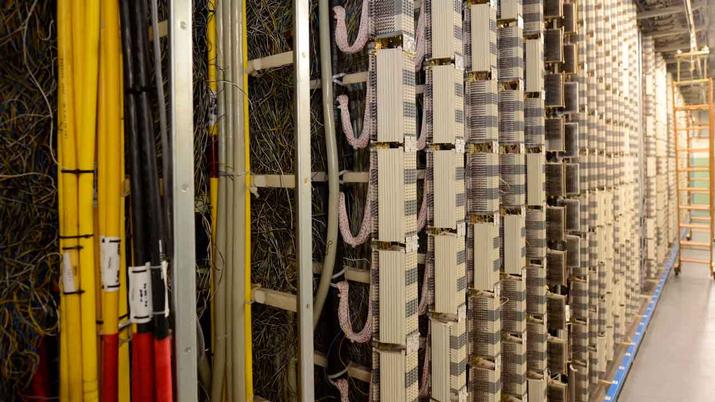Now that the ADSL copper exchanges are disappearing, whose end is scheduled for 2025, Telefónica already knows what uses it will give to many of these buildings, renovating them so that they can still be valid when ADSL disappears and boosting its fiber service.
Considering that a single fiber exchange can cover the same number of customers as four copper exchanges, in full dismantling the vast majority of these buildings are left over. Telefónica only needs to keep a quarter of the 8,525 exchanges used for copper to provide broadband service, what about the rest?
A second life for copper plants
Telefónica is immersed in a process of closing the copper exchanges, which are used to support ADSL. Right now, all the plants except one have an estimated closing date. Specifically, 8,525 plants are the ones that remain to be closed. Of these, 2,911 will have closed by the end of 2023, the process will be well advanced in 2024 and practically finished in 2025.
The release of these infrastructures can be used for various uses, so the teleco can renew and redundant its infrastructures in about 300 in the next three years, starting with 117 of its network buildings.
The redundancy of facilities will guarantee service to the end customer, minimizing as much as possible the effects of a possible power outage on their equipment. Regarding the renovation, it includes a wide range of technological solutions prepared to increase the energy efficiency of buildings, reduce costs, improve the user experience and increase security.
The main efforts that are taking place in the conservation and adaptation of these old copper power plants are at the soundproofing level, to minimize the acoustic impact, a very relevant aspect in power plants located in historic centers and residential areas and also for their air conditioning, key for proper equipment operation.
In addition to substantially increasing the capacity of current infrastructures, these reforms affect environmental sustainability and seek greater energy efficiency in its operation.
With this project, Telefónica is carrying out an exercise to modernize and secure its fiber installations, replacing copper for its next centenary, offering a safe, efficient network that is committed to the environment. The transformation of networks makes special sense in terms of sustainability. Telefónica’s fiber network manages to reduce the environmental impact (energy and other material resources) by up to 94% in Spain, which is 18 times less than copper with equivalent data consumption.
Another destination of these buildings is to become data centers edgehosting servers in the cloud of Telefónica and other public cloud partners such as Amazon AWS who want to reduce latency by being as close as possible to customers.
Build a greener world
The changes made to the plants are part of Telefónica’s strategic commitment to protecting the environment. Telefónica Spain has the objective of neutralizing its own carbon emissions (scope 1 and 2) in 2025 and reaching net zero emissions in 2040. This is possible, to a large extent, thanks to the company’s previous efforts in terms of energy efficiency , design and implementation of technologies and renewable energies.
This Telefónica commitment runs parallel to what can be seen in mobile networks, with the transition from the 2G/3G standard to 4G/5G, with an environmental impact 7 times less for equivalent data consumption. For Telefónica, it is a priority to keep energy consumption stable while data traffic increases. The network that the operator makes available to consumers is constantly evolving and moving decisively towards sustainability: since 2015 in Spain it has reduced its operational emissions by 96% (scopes 1 and 2) and 58% including emissions from its chain of value, with a 12% decrease in energy consumption, although data traffic has multiplied by 4.7 in the same period.












